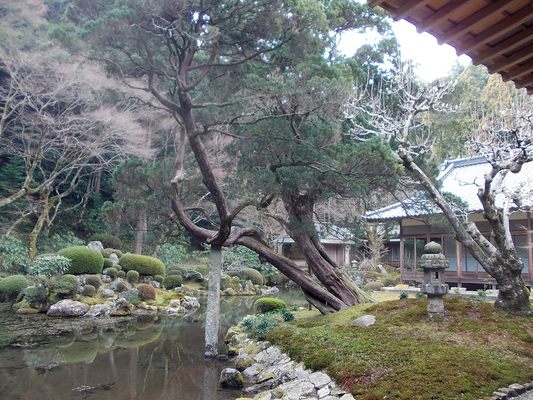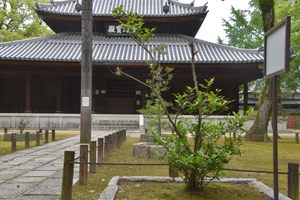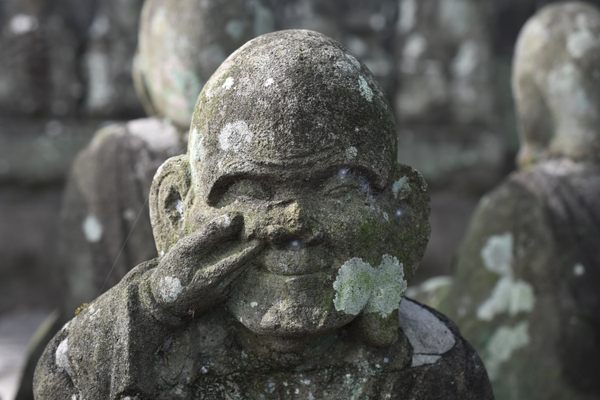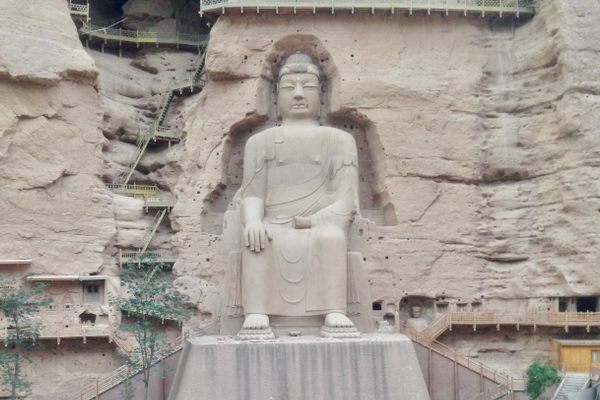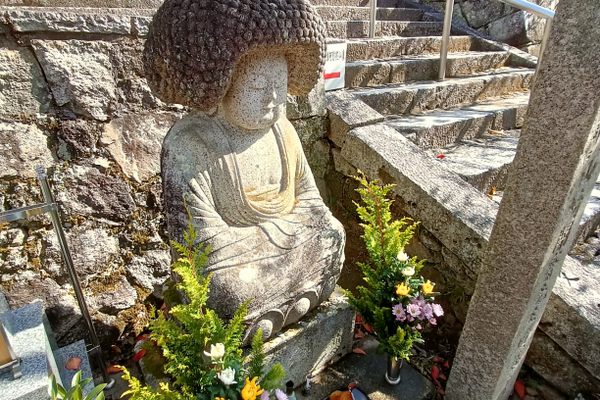About
Until around 150 years ago, Mount Rai, where the Sennyoji Daihioin temple sits, would have been filled with dozens, if not hundreds, of shrines and temples. Most sites of worship were home to both Buddhist and Shinto beliefs, and worked in harmony with each other for centuries. That came to an end during the Meiji Restoration in the 19th century. The imperial house preferred Shintoism, which favored the emperor’s ancestral lineage, while Buddhism was tied to the previous government. Shrines and temples across Japan were ordered to separate these beliefs, and most of the sacred sites on the mountain were destroyed. Buddhist property and artifacts saw damage and loss due to anti-Buddhist movements at the time.
The monks at Sennyoji gathered important artifacts in the area and placed them in Sennyoji for protection.
The temple is now home to the 500 stone Buddha disciples, many antique documents, and a wooden, 16-foot-tall, 1,000-armed Avalokiteśvara bodhisattva statue, the main focus of the temple's faith. For a small fee, you can walk around the inner part of the grounds, and take your shoes off to walk silently through the inner route, exploring several rooms in the temple, and out into the shrine garden, with a pond in the shape of the Japanese symbol for heart. At the foot of the bodhisattva, a monk will offer a prayer for your health and traffic safety.
The rest of the temple is free to explore. The central maple tree turns a vivid orange in autumn, a last burst of ethereal light before winter. The grounds host a small waterfall, several buildings and many stone statues that had been saved, in the beautiful mountain setting.
The local farming villages are quaint and beautiful, and there are many hiking paths, in addition to a route for climbing Mount Rai.
Related Tags
Know Before You Go
Getting there by public transport is a little tricky, but Apple Maps can point out the the community buses that traverse rural Itoshima. Go early, come back early, and pay close attention to the bus schedule.
Hidden Japan: Sado Island, Nara & Kyoto
Explore a different side of Japan.
Book NowPublished
June 4, 2020
